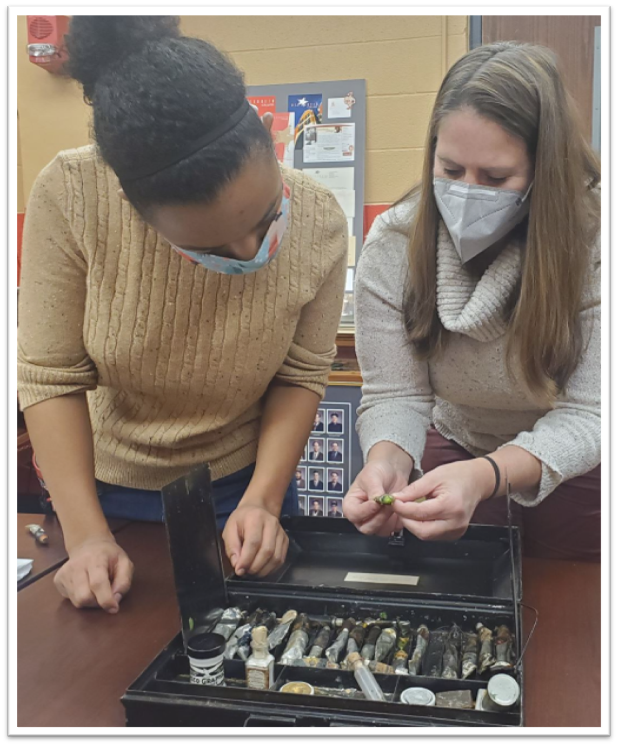Professor and Students Combine Chemistry, Art, and Otterbein’s History in Unique Research Project
Posted Jun 23, 2022
By Kailey Mishler ’24
Chemistry Professor Joan Esson and two Otterbein students are working on a project that connects art and chemistry to the school’s history.
Esson was inspired by an art kit discovered in Otterbein’s archives that dated back 136 years. This kit is labeled “Art Kit used by Lizzie Crayton Carr at Otterbein about 1886,” and includes paint tubes and other art tools.

“Lizzie graduated from Otterbein’s academy. She went into some type of art teaching. There’s not a lot of history on her background that we could find,” said Esson. “Her father was one of the early fundraisers for Otterbein. And both her siblings were integrated in Otterbein as well.”
Esson was drawn to studying this art kit due to its link to Otterbein’s history.
After some research, Esson discovered that Lizzie’s family lived on College Street near campus in Westerville. Her father, Reverend J. A. Crayton, was a “soliciting agent” for Otterbein throughout the 1870s. Her brother, Albert, graduated from Otterbein in the 1880s, and her sister, Lillie, was a member of the Otterbein’s Cleiorhetean Literary Society.
Esson explained what is being studied throughout the course of this project and its interesting ties to chemistry.
“Paint tubes were invented only shortly before this and some paints were of questionable quality. So an analytical study of the materials in the kit is interesting from a chemical perspective,” said Esson.
Additionally, the project presents the opportunity to share chemistry and art related research from the 1800s. Esson noted that there are very few peer-reviewed papers published from this time period.
Esson is working on this project with two Otterbein seniors, Lindsey Payton and Claire Kivala. Although both of them are Equine Science majors, Esson explained that they took Chemistry 1500 and Integrative Studies (INST) 2408 with her, which piqued their interest in researching this topic.
“I was interested in this project after taking Dr. Esson’s INST class, Chemistry in Art. This class showed the connections between chemistry and art and how they go together hand-in-hand. I also love history, so when asking about what projects Dr. Esson was working on, I was immediately interested in studying a paint set from the 1800s,” said Payton.
Payton also described her role in the project. “I am using Raman Spectroscopy to analyze each pigment and identify which chemical compounds are in each pigment to see if it is the true color the company is saying it is,” said Payton. “Raman Spectroscopy utilizes a laser that analyzes the vibrations of the different atoms in the pigment which is then studied.”
With all the work that still needs to be completed for the project, Esson said that she does not have an exact timeline for when the research will wrap up; however, she hopes it will be done within the upcoming academic year.